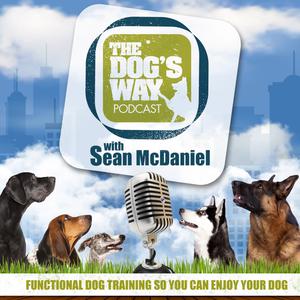
The Dog's Way Podcast: Dog Training for Real Life
Sean McDaniel
- 1 hour 7 minutesSession 120: Dogs and Babies with Aileen Cronin
In this episode I had the pleasure of chatting with Aileen Cronin, the founder of Dogs of Scottsdale and the creator of Baby Pack Leader. We dove into a fascinating discussion about the intersection of dog training and family life, particularly focusing on how to navigate the challenges of integrating dogs into a household with young children.
Aileen shares some insightful anecdotes about her experiences with both dogs and kids, highlighting how the dynamics between them can be both rewarding and complex. From dealing with time concepts that kids struggle to understand, to balancing the emotional demands of working with challenging dog behaviors, Aileen's stories are both enlightening and relatable.
The realities of dog training are that it’s not just about teaching a dog a thousand things once, but rather focusing on one thing at a time and repeating it until mastery. We talk about the importance of context and consistency, how dogs can behave differently in various environments, and how crucial it is for owners to understand and address these differences.
Aileen’s approach is practical and empathetic. She stresses that while dog training is often seen as a luxury, it can be crucial for creating a harmonious household, especially when dealing with complex behaviors or integrating a dog into a family with children.
If you’re interested in learning more about her methods or getting involved with her services, check out her website at BabyPackLeader.com.
Thanks for listening, and if you’re looking for more insights or have any questions about dog training and family dynamics, feel free to reach out. Until next time, keep having fun with your pets and kids, and I’ll catch you in the next episode!
Sean
Links to Aileen and Baby Pack Leader
BabyPackLeader.com | Dogs of Scottsdale Facebook Page | Aileen Cronin LinkedIn
The Swiftest Link Here’s the link to the comparison article from The Swiftest
The Dog’s Way Affiliate program If you’ve been referring the video course to people and would like to make a few bucks for your referrals, you might want to check out our affiliate program. https://thedogsway.com/affiliates-resources/
18 September 2024, 5:10 pm - 36 minutes 23 secondsSession 119: Which Training Collar is Right for You?
In this episode I talk about training collars. Are they right for you? And if so, what kind of training collar do you choose for your dog, and just as important... what kind to choose for your dog/owner combination? For those who may be opposed to the idea of a training collar, I still urge you to listen. After training hundreds of dogs I have some ideas to share that might help with your decision on the matter.
Today's episode is sponsored by The Swiftest. Instead of doing all of the research yourself on what type of pet insurance to buy, consider clicking this link to rely on their extensive research. It's also a great way to support the show!
The Minimum Collar for TrainingMartingale Collar: basic low level training collar. At a minimum I use a martingale collar like the one at this Amazon link (no plastic clasps, no chain loops) Here’s a link to find out more about this type of collar on Amazon. They also have them in most Pet stores. FYI – if you read the reviews of these collars, you’ll read some from people who left them on their dogs, while they were home alone all day, and they got the collar caught on things and choked themselves. So … don’t do that – problem solved. Note: make the size selection that is appropriate to your dog.
Upgraded Training CollarsHerm Sprenger Chain Collar: Medium level upgrade for more rambunctious dogs (again, more info on this at this link)
Starmark Plastic Training Collar: Medium plus level of collar. (Note – these come with a redundant line slip collar that you use with this collar to guard against the possibility of an improperly fitted link coming apart and separating while you’re training – be sure to use this redundant safety collar when you’re using the Starmark collar.) Click here to view on Amazon.com.
Herm Sprenger Prong Collar: The highest level of leverage and the collar makes it easiest for you to manage your dog in training and on walks. We generally work our way out of this collar as a dog’s proficiency indicates that it’s not necessary anymore.
Here is the metal collar link http://amzn.to/29842kW
And an alternative http://amzn.to/29bLHVb
Note: I often use a redundant slip collar (like the one indicated above as an alternative) when I use a prong collar. Because this training collar has separate movable pieces to it, there’s a possibility (usually human error) that sometimes results in the collar coming apart while training.
The redundant slip collar assures you that you don’t lose your dog if this happens. Also, it’s worth stating that they have decided to name this slip collar a “dominant dog collar”? I’m not really sure why. It functions just as well for nondominant dogs that happen to have a training collar break and want to run across a busy road to play with another dog … guess they figured the name sounded cool? Full disclosure, this page contains affiliate links. We’ll make a few dollars if you purchase through the affiliate links.
The Dog's Way Affiliate ProgramAdditionally... we offer our online video course at TheDogsWay.com. If you'd like to refer others to it and make a few dollars at the same time, try our affiliate program!
Affiliates Resources - The Dog's Way (thedogsway.com)
This process will be very straightforward if you are familiar with the Click Bank Affiliate platform. If you need help signing up with Click Bank and finding the course, there are a lot of videos on YouTube that will walk you through how to do it.
8 May 2024, 7:53 pm - 30 minutes 32 secondsSession 118: Use Transitional Rewards to Help Your Dog Settle
In this episode I talk about natural transitional rewards. Many may not have heard the term, but a lot of you may have used them in the training of your dog whether you realize it or not. If you want to do a real dive into the behavioral part of training, I encourage you to listen to my two episodes on conditioning - Session 73: Skinner's Four Quadrants Part One, and Session 74: Skinner's Four Quadrants Part Two.
I'll talk about the conditioning baked into every day interactions with your dog (like the feeding ritual). The same thing goes for when we are preparing for a walk. Those rituals can be a good thing. But it's it's more than simply the obedience skill you're teaching - it's the nervous system state that is occurring during that sit/stay and from the moment that you give the command to "break free" or say "all done". I'll describe how those commands and practices get embedded in their head, and how that fixation needs to be inhibited in certain instances.
Here are a couple of other instances where you might practically use this training;
- Preparing for a walk
- Preparing for feeding time
- The "Getting out of a car" ritual
- Going through the front door ritual
- Going through the gate at the dog park ritual
I'll talk about how sometimes we unintentionally signal to our dog when we reward certain types of gregarious responses is "I love it when you freak out and run around when I do this action!" Identifying those habits is a real eye-opener to what you might want to consider adjusting during these routines.
Meet Our New Sponsor!By the way, a couple of things that I wanted to mention to you. First, we have a new sponsor of the podcast! It can be so frustrating trying to find the right insurance for your dog! My new sponsor, The Swiftest, can help you compare different types of policies and quotes for your pet to make sure you get the best value for your pet! Click here for the 6 Best Pet Insurance Plans Compared for 2023. (full disclosure – this is an affiliate link, and we’ll make a few bucks if you decide that the pet insurance that the folks at The Swiftest have recommended is right for you.)
The Dog’s Way Affiliate ProgramAlso, I sincerely appreciate all of those who have referred my video series to friends!
Here’s how you can make some money by referring the Online Video course to folks:
Affiliates Resources - The Dog's Way (thedogsway.com)
This process will be very straightforward if you are familiar with the Click Bank Affiliate platform. If you need help signing up with Click Bank and finding the course, there are a lot of videos on YouTube that will walk you through how to do that. If you need some assistance with the process, feel free to email me directly via the link below:
Contact Page - The Dog's Way (thedogsway.com)
6 December 2023, 7:53 pm - 34 minutes 48 secondsSession 117: Teen Puppy Issues and Solutions
In this episode, I dive into the world of teen puppy training, and exploring the challenges and rewards of raising a well-behaved canine companion. Whether you're a new or experienced dog owner, join me as I discuss some tactics for a successful training journey.
The Teenage Phase of Puppy TrainingDuring the teenage phase of puppy training, expect your dog to undergo significant changes in behavior and temperament. This phase usually occurs around 4 to 8 months of age and can be characterized by increased independence, occasional rebelliousness, and a surge in energy levels. Recognizing these changes is crucial, since it allows you to adjust your training approach and provide the guidance and structure your dog needs to mature into a well-rounded adult dog. By understanding that these behaviors are a natural part of their development, you can navigate this challenging period with patience, consistency, and positive reinforcement.
Setting Expectations and Reinforcing Training PrinciplesIt's essential to set realistic expectations and reinforce the fundamental principles of teen puppy training. Remember that every dog is unique, and the training journey may have its ups and downs. Consistency is key: establish clear rules and boundaries from the beginning, and ensure everyone involved in your dog's life follows them consistently.
Positive reinforcement, like rewards and praise, is a powerful tool for shaping desired behaviors and building a strong bond with your dog. Remember that training is an ongoing process. Be patient, stay committed, and enjoy the journey of watching your teen puppy grow into a well-behaved and happy adult dog.
30 June 2023, 11:14 pm - 28 minutes 45 secondsSession 116: How to Teach a Puppy to Stop Jumping Up
In this episode, I talk about using a modified version of the approach I talked about in session 115 so that you can train a puppy. Just like you'd teach your children differently than you would teach them as an adult, there are incremental parts of the process that apply differently to a puppy. As I mentioned with adult dogs, this is fundamental training that is typically one of the first lessons I teach in person. To review the session for adult dogs, check out session 115 here.
The reality of training any social mammal is that it requires different approaches based on age. In all development, small progress markers for are clarified to help create a foundation of understanding for a younger brain. I talk about some of those concepts and how to apply it to training a puppy. Additionally, I'll point out the counterproductive approach to continuing to teach a dog as a puppy, the same way that it might seem odd to teach a teenager the way you'd teach a small child. I'll also cite some examples where you might apply a small version of some of those with older dogs in certain instances.
We'll apply similar principles from session 115, where we use a two-step approach. For puppies, we use it to help with a first stage (away from humans) to remove them from a setting where the puppy may just absolutely lose their mind when approaching a person. Once they've understood that, a second step involves interaction with people.
With a puppy, it's not phrases, but general noise making to draw their attention. I'll demonstrate techniques to enlist help of people you may encounter with your puppy, demonstrate the approach, and specific verbal markers to relay to your puppy during each stage of the process.
This process can be fun and is a key fundamental part of the training process.
Enjoy this episode, and go have fun with your dog!
Sean
15 March 2023, 10:00 am - 46 minutes 29 secondsSession 115: How to Stop Jumping
We're going to go through a protocol to help train your dog (over 7 months old) to stop jumping on you or others.
I'll address the two key scenarios that come up regarding jumping. One scenario, where you live alone and they jump on you. And then another scenario where someone else comes up to visit and your dog jumps on them because they're excited to see them!
I'll provide some setup for those of you who may be new to the podcast; the goal is to help you understand the step-by-step process that talks about the relationship, basic course skills, and then we deal with policies.
Episodes two and three provide some great foundational lessons to understand the relationship between you and your dog.
This is usually a first lesson I provide with in-person training for establishing the relationship between you and your dog - not in the sense of whether or not you care about your dog, but in the fundamental connection that you have. Do they have that type of relationship with you that means they understand the role you two have together in training and obedience? If those foundations need to be established, those two episodes will help.
Thanks for listening!
27 January 2023, 4:09 pm - 38 minutes 9 secondsSession 114: A Follow Up to Questions and Criticism from the Previous Episode
Session 113 covered some training goals to teach a dog to stop certain behaviors, specifically barking and "counter conditioning".
I was surprised to find that Session 113 brought on a record amount of feedback! I got a lot of positive response, but some criticism as well. In this episode I respond to some of that, including a letter from someone who suggested that they were a trainer, and took issue with some of the content in session 113.
I wasn't sure where in the show they heard it, but one part in particular was regarding Patricia McConnell's teaching about counter conditioning, and that somewhere I suggested that they shouldn't use her method. It turns out that I didn't suggest that. I addressed that they had been coached to try that and it didn't work.
Most of this advice is based on a few things; where in the training their dog is, their age, what approaches have been tried in the past and which have not. In some instances a tried and true approach doesn't work, and alternative methods should be applied.
I'll review it from a psychological approach and explain the intent and hopefully clear up some confusion on the subject.
I wanted to talk about another category of feedback I received that was that they tried it but had mixed results. This is what real training looks like in the execution stage. There are techniques and shifts in the approach with every type of dog and behavior. Trina was one of the people who responded and said that using the "tug upward" method to give negative feedback for barking. I asked her a few follow up questions to get a better sense of what she needed to eliminate confusion for her dog.
27 December 2022, 2:58 pm - 39 minutes 18 secondsSession 113: Avoid Mistakes When Teaching a Dog to Stop Barking
In this episode I'll cover some training goals to teach a dog to stop doing something. Barking is one of the key areas of focus, as well as a discussion on "counter conditioning".
Some may ask if they should do the "lab oriented" counter conditioning or another technique. My approach involves assessing where your dog is on a spectrum, and I'll explain the range. It can also be useful to determine for other areas of training. Some may be driven by a defensive approach, a territorial approach, etc., and I'll talk about some of the areas to be careful about when trying to decide whether to put training methods in place. I'll also talk about the shy, scared side of the spectrum that has other challenges and training methods that should be applied.
I will talk about using behavioral adjustment training or counter conditioning when it comes to these techniques as well. Imagine that scenario that causes the dog to bark and you provide some food to distract or adjust the behavior. You'll see them enjoy it in the moment. But what was the treat's connection to the behavior from the dog's perspective? Did you train them for next time, or did you distract them in the moment? Treat training isn't a bad thing but it is important to understand the differences and apply the right methods with this approach.
I also clarify some confusion regarding episode 112 regarding a comment I made regarding shelter dogs.
16 November 2022, 8:19 pm - 40 minutes 27 secondsSession 112: Avoid Making Your Dog Too Crazy with Food Treats
In today's episode I'll go over some mistakes some people make in food treat training and how to avoid making your dog hyper when using food in training.
I don't typically use food as my standard training method (which you've probably learned if you've listened to my podcast for a while). There are instances where it is helpful, and there are very different methods depending upon your dogs age, personality, and upbringing, etc. I'll talk about instances where I use food for training and areas for you to consider as well.
I will answer a specific question from an email I received from Mitch, regarding specific mistakes of using food all the time.
Assess whether it's actually an issue. I'll show you some things to look for.
If you determine that it is a problem, experiment with some different techniques. I'll give a few things to try that I've used when training other trainers, including posture, demeanor, and more.
I talk about "marker" training as an option, and will discuss downplaying treats as a reward as part of this.
I will also talk about redirection, and the comparison and contrast of training methods to use depending on the type of challenge you face.
Enjoy, and hopefully this helps!
1 November 2022, 6:51 pm - 56 minutes 49 secondsSession 111: Interview with Kellee Zenk of Dogs Decoded
Today I speak with Kellee Zenk, who has a very interesting origins that led her to dog training. She's the founder of Dogs Decoded, based in Minnesota.
Kellee has a background in training bears and elephants! We discuss how she got started in that area and how it led to where she is today.
Kellee got her start at private zoos in Minnesota and loved training bears and really enjoyed marker and clicker training. She talks about some early mistakes and talks about the full range of experiences.
Kellee and I contrast the dynamic of dog trainers and how you develop better communication with the dog owners as you gain more experience. We also talk about our approach to "play" with dogs, and how to help owners create certain distinctions regarding when play time is on and off, and how to establish that relationship over time as the relationship is clarified.
I ask Kellee about her method or philosophy and how it has evolved. Kellee talks about how she is not a "purely positive" trainer. She is very versed in Skinner's theory, which we've detailed in podcast episodes 73 (part 1) and 74 (part 2).
We talk about bridging signals as part of verbal markers and get deeper into Skinner's four quadrants.
15 June 2022, 11:53 pm - 38 minutes 21 secondsSession 110: Melissa Stagnaro of American Retteungshunde Sport Association
On this episode I introduce Melissa Stagnaro, the Vice President of American Retteungshunde Sport Association. With the long name, it is commonly nicknamed "RH".
They are an organization that does "sport" search and rescue.
This is a great sport for your dog that is incredibly unique, and focuses on some pretty high-level activities for fun and exercise.
We talk about the origins. FCI, (which is the International Dog Federation) partnered up with a newly formed group called the International Rescue Dog Organization. They ultimately created four levels of sport competition related to rescue. They focus on scents, urban disasters, earthquake simulations, footstep tracking, building collapses, and much more.
We talk about what this looks like for people that want to join in, and Melissa discusses their interest in getting more people involved in existing events and establishing more clubs.
There is an event going on in Washington state as well. For more information on that, click here.
For more information visit SearchAndRescueSport.org.
23 May 2022, 8:22 pm - More Episodes? Get the App
Your feedback is valuable to us. Should you encounter any bugs, glitches, lack of functionality or other problems, please email us on [email protected] or join Moon.FM Telegram Group where you can talk directly to the dev team who are happy to answer any queries.
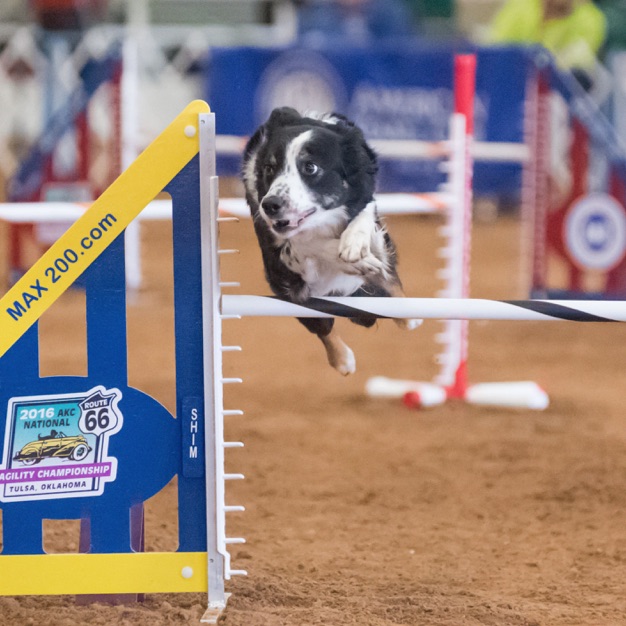 Cog-Dog Radio
Cog-Dog Radio
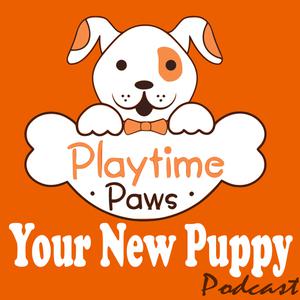 Your New Puppy: Dog Training and Dog Behavior Lessons to Help You Turn Your New Puppy into a Well-Behaved Dog
Your New Puppy: Dog Training and Dog Behavior Lessons to Help You Turn Your New Puppy into a Well-Behaved Dog
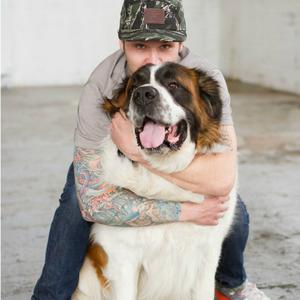 No Bad Dogs Podcast
No Bad Dogs Podcast
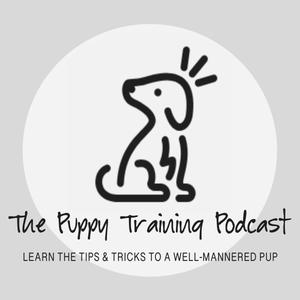 The Puppy Training Podcast
The Puppy Training Podcast
 Shaped by Dog with Susan Garrett
Shaped by Dog with Susan Garrett
 Radiolab
Radiolab